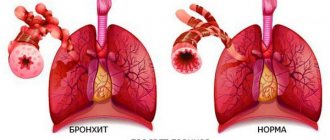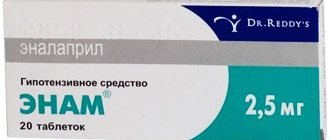Product description
The liquid is light yellow to yellowish-brown in color with a weak characteristic odor.
MALTHEA SYRUP
Release form
Syrup
Compound
Active substance: Marshmallow root extract (marshmallow root extract dry) (containing the amount of reducing monosaccharides in terms of glucose - 1.%) - 25 g;
excipients: sodium benzoate, sucrose (sugar), purified water.
Package
Bottle 125 g.
pharmachologic effect
Marshmallow syrup has a reflex expectorant, as well as a local anti-inflammatory effect, reduces the viscosity of bronchial secretions.
Indications
Diseases of the respiratory tract, accompanied by a cough with difficult to clear sputum (tracheitis, tracheobronchitis, bronchitis).
Contraindications
Increased individual sensitivity to the components of the drug. Sucrase/isomaltase deficiency, fructose intolerance, glucose-galactose malabsorption.
Use during pregnancy and breastfeeding
Use during pregnancy and breastfeeding is possible if the expected benefit to the mother outweighs the potential risk to the fetus and child. You should consult your doctor.
Directions for use and doses
Marshmallow syrup is taken orally: Children under 12 years old – 1 teaspoon of syrup, previously diluted in ¼ glass of warm water, 4-5 times a day after meals. Children over 12 years of age and adults - 1 tablespoon of syrup, previously diluted in ½ glass of warm water, 4-5 times a day after meals. The duration of treatment is 1-15 days. Increasing the duration and repeated courses of treatment is possible in consultation with the doctor.
special instructions
Information for patients with diabetes: 1 teaspoon (5 ml) contains .4 XE (bread units), 1 tablespoon (15 ml) contains 1.2 XE. The drug does not affect the ability to drive vehicles, operate machinery or engage in other hazardous activities that require special attention and quick reactions.
Drug interactions
Marshmallow syrup should not be used simultaneously with preparations containing codeine and other antitussive drugs, as this makes it difficult to cough up liquefied sputum.
Overdose
Symptoms: nausea, vomiting. Treatment: drug withdrawal, gastric lavage.
Storage conditions
In a place protected from light at a temperature not exceeding 25°C.
Best before date
1 year 6 months
Marshmallow syrup - instructions
Medicinal marshmallow is a perennial plant that has healing properties. The root is valuable - it contains carotene, mucous substances, fatty oils, pectin, and betaine and asparagine necessary for the body. The mixture is a transparent, thick liquid of yellow or red color with a pleasant aroma and sweet taste. The medicine is produced in dark glass jars or bottles of 125 or 200 g. The description of the instructions for marshmallow syrup states that the drug has an expectorant, anti-inflammatory local bactericidal effect.
The drug contains:
- purified water;
- marshmallow root;
- sodium benzoate;
- sucrose.
Currently, marshmallow syrup, the instructions for use of which describe the release form and indications for use, has positive reviews, noting the rapid relief from cough and the high effectiveness of the herbal medicine. As a rule, only a doctor can prescribe a remedy after determining the cause of the cough. Since marshmallow syrup (althaeae sirupus) has expectorant properties, it is often used for difficult to clear sputum. The mucous component of the drug envelops inflamed as well as healthy areas, thereby protecting them from irritation.
Marshmallow syrup during pregnancy
Doctors often recommend marshmallow cough syrup for use by women who are expecting a baby. In this case, you cannot self-medicate and take the drug yourself; you must consult with a specialist about the benefits and harmful effects for the child. According to reviews from many pregnant women, syrup is a safe drug that is well absorbed in the stomach and removes toxins and microbes from the body.
They try not to take marshmallow root during pregnancy in the first trimester. An increase in coughing attacks can lead to tension in the uterus, resulting in hypertonicity. In the 2nd and 3rd trimester, syrup is prescribed with caution. In this case, the woman needs to take the medicine one tablespoon after diluting it in 100 ml of boiled water. According to the instructions, the frequency of administration is determined individually, but not more than three times a day.
- How to make your nose smaller with makeup - visually. What you need to reduce your nose with makeup, photos and videos
- How to Use an Elliptical Trainer to Lose Weight - A Workout Program for Men and Women
- How to weave macrame bracelets
Growing and cultivating marshmallow
Althea prefers light, moist soils with shallow groundwater. The best predecessors are fallow, forage and vegetable crops. When cultivating it, the soil is plowed to a depth of 25-28 cm. For sowing marshmallows, 1-2 year old seeds are used, previously dried to a loose state. To increase field germination before sowing, they are soaked for a day in water at a temperature of 20-25 ° C. Marshmallow seeds are sown in early spring or before winter in rows with row spacing 70 cm wide to a depth of 1.5-2 cm (on light soils - 3-4 cm). After germination, the plants are thinned out, leaving 8-10 pieces. per 1 m2. Sometimes marshmallows are propagated by dividing rhizomes or seedlings. Productivity in dry root culture is 10-25 c/ha.
Marshmallow syrup - indications for use
Marshmallow syrup has long been used in medicine. It is used to treat inflammatory diseases of the respiratory tract. Preparations made from the root have a pronounced softening effect and effectively eliminate pain caused by the inflammatory process. The medicine can be used by patients of any age. According to the instructions, indications for the use of marshmallow syrup are the following respiratory diseases:
- laryngitis;
- bronchitis;
- tracheitis;
- pneumonia;
- tracheobronchitis;
- emphysema;
- whooping cough;
- bronchiectasis;
- bronchial asthma.
The beneficial properties of the herbal medicine are as follows:
- relieves local inflammation;
- has a mucolytic and expectorant effect (facilitates the removal of mucous mass);
- relieves swelling;
- activates recovery processes;
- may reduce the secretion of gastric juice.
Chemical composition of marshmallow
A large amount of mucous substances (up to 35%) were found in the roots of marshmallow, which mainly consist of polysaccharides that decompose during hydrolysis into galactose, arabinose, pentose and dextrose. In addition, marshmallow roots contain starch (up to 37%), pectin (10-11%), sugars, asparagine, betaine, carotene, lecithin, phytosterol, mineral salts and fatty oils (up to 1.7%). The leaves also contain mucus (up to 12.5%), essential oil (0.02%), rubber-like substances, ascorbic acid, and carotene. In flowers, the mucilage content reaches 5.8%.
The roots contain: ash - 8.65%; macroelements (mg/g): K - 11.30, Ca - 17.40, Mq - 4.00, Fe - 0.73; microelements (CBN): Mn - 0.10, Cu - 0.47, Zn - 0.25, Co - 0.10, Cr - 0.10, Al - 0.46, V - 0.29, Se - 5 .71, Ni - 0.15, Sr - 0.63, Pb - 0.05, I - 0.10. B - 0.20 µg/g. Mo, Cd, Li were not detected. Ag, Au, Ba, Br. Concentrates Fe, Se. Can accumulate Cr, V.
Description, reproduction and distribution area of marshmallow
Perennial herbaceous plant of the mallow family (Malvaceae), up to 150 cm high.
The marshmallow rhizome is short, thin, multi-headed, with a large woody main root and numerous fleshy and thick lateral roots.
There are several stems, rarely solitary, erect, cylindrical, weakly branched in inflorescences, dirty purple at the base, glabrous, strongly pubescent in the upper part.
The lower leaves of the marshmallow are round or kidney-shaped, usually dying by the time of flowering, the middle ones are round or ovoid, slightly lobed or almost entire, with a rounded or slightly heart-shaped base; the upper ones are solid, oblong-ovate, pointed. All leaves are unevenly crenate-toothed, weakly pubescent above, densely pubescent below.
Marshmallow flowers have a whitish or pink corolla and a double calyx. They are crowded together on short stalks, sitting on common peduncles, located in the axils of the upper leaves and forming a kind of spike-shaped inflorescence.
The marshmallow fruit is a flat, disc-shaped fractional polysperm, which in its mature state breaks down into 15-25 single-seeded, kidney-shaped fruitlets. The seeds are smooth, dark gray. Weight of 1000 seeds is 2.0-2.7 g.
Marshmallow blooms from the second year, in June - early August, the fruits ripen in August - October. Reproduces mainly by seeds.
Marshmallow is widespread in Ukraine, Belarus, the Caucasus, the Volga region, Central Asia, Eastern and Western Siberia.
Marshmallow grows in meadows, mainly solonetzic and solonchak, in floodplains of rivers, among thickets of bushes, along the banks of lakes, irrigation canals, and in steppe depressions.
There is information about the toxicity of marshmallow. Even in ancient times, marshmallow was known and valued as a medicinal plant. The name itself speaks of its medicinal properties (from the Greek althaea to heal).
Analogs
On pharmacy shelves today you can find several effective analogues of marshmallow syrup, which have similar indications for use and pharmacological effects on the body. Such products differ by country and manufacturing companies, dosage and concentration of substances. Before choosing any similar medication, you should consult a qualified specialist. The most famous analogues of marshmallow syrup:
- ACC;
- Septolete;
- Stodal;
- Combiflu Syrup;
- Doctor Mom;
- Wifitech;
- Gedelix;
- overslept;
- Mukaltin;
- Althea root;
- Phytopectol.
Marshmallow syrup for breastfeeding
Cough is not a reason to stop lactation. But women during breastfeeding should begin taking any drug only after consultation with a therapist and gynecologist to clarify possible contraindications. Marshmallow syrup during lactation, as well as licorice tincture, are the most popular means for softening and eliminating cough, because they are based on natural ingredients that do not affect the quality of milk. In this case, you can use diluted syrup no more than twice a day.
Collection, preparation and drying of marshmallow
The medicinal raw materials of marshmallow are the roots (Radix Althaeae).
They are harvested in the fall after the marshmallow stems have dried or in early spring. Harvesting should be carried out selectively, leaving up to 30% of marshmallow plants to restore the thickets.
If the harvesting rules are followed, marshmallow thickets are restored in 3-4 years, after which repeated harvesting is possible.
They dig up marshmallow roots with shovels, and in extensive thickets with plows. Then they are freed from the ground, the stems, capitate parts of the rhizomes and the main tap root of the marshmallow, usually woody and unsuitable for use, are removed. Non-lignified marshmallow roots are washed, slightly dried, cut into pieces 30-35 cm long (thick, fleshy ones are split lengthwise into 2-4 parts). To obtain purified raw materials, the gray plug is scraped off the marshmallow roots with a knife.
Immediately after processing, the raw materials are dried, laid out loosely in a thin layer on meshes or stretched panels.
Drying is best done with artificial heating in ventilated rooms or in special dryers at a temperature of 45-50 ° C and good ventilation. When marshmallow roots are dried in air, the raw material, which contains a lot of starch, usually quickly rots and becomes moldy. Well-dried roots break with a bang.
The shelf life of raw materials is 3 years.
The whole plant is odorless and tastes sweet and tart.





